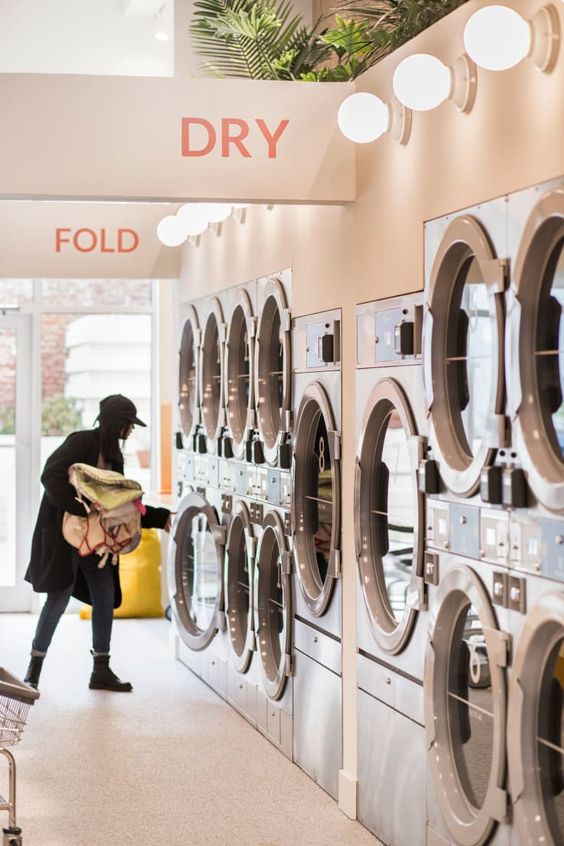How Effective Laundry Room Management Makes or Breaks Operations
There’s more to laundry than loading machines and pressing start. In commercial setups—hotels, gyms, short-stay accommodation—the laundry room is a high-output engine that needs clear systems to keep everything running smoothly. Done right, Laundry Room Management saves hours, reduces overheads, and helps deliver a consistently high standard of service.
So, what actually goes into managing laundry from start to finish? Here’s a practical guide to the seven steps of the laundry process—and how smart management can help you nail each one.
1. Collection: Where Organisation Starts
Laundry management begins well before the first load is washed. Collection is the crucial first step—whether it’s on-site staff gathering items or route drivers collecting bags across multiple locations.
The key is to standardise how laundry is packed, labelled, and transported. Use colour-coded bags or barcoded tags that identify item types, origin, and quantity. This eliminates confusion at the sorting stage and speeds up check-ins at processing hubs.
For businesses handling multiple sites or needing efficient pickups, integrating route scheduling into your Laundry Room Management process keeps things on time and traceable.
2. Sorting: The Silent Time-Saver
The next step is sorting—and it has more impact than people realise. Mixing cottons with synthetics, whites with colours, or sheets with towels can lead to fabric damage, wasted cycles, and poor presentation.
Set up clearly marked sorting zones. Sort by fabric type, soil level, and colour. If your laundry intake fluctuates, consider batching jobs by client type or delivery time.
The more consistent your sorting, the easier it becomes to load washers efficiently—boosting throughput without increasing staff hours. Systems like RFID or barcode scanning are now common in advanced Laundry Room Management to track loads at every stage.
3. Washing: Get the Cycle Right
Once sorted, items move into the wash phase—arguably the most resource-intensive part of the process.
Commercial-grade washers need to be programmed for different load types. That means selecting the right cycle, temperature, and detergent dosing. Overuse of water or chemicals not only costs money but wears out fabrics faster.
Smart laundry rooms often rely on automated dosing systems and scheduled maintenance to ensure consistency. Keep track of cycle performance data, and review frequently to spot waste. Wash loads based on demand, not habit.
For efficiency benchmarks, the U.S. EPA’s Energy Star guidelines offer insights into energy-efficient washer performance—even applicable in Australian commercial settings.
4. Drying: Don’t Overdo It
Once clean, items head to drying—and this is where many operations lose time and money. Over-drying is not just wasteful; it reduces linen life by exposing fibres to unnecessary heat.
Use dryers with moisture sensors that automatically shut off when items reach optimal dryness. Empty lint traps regularly to maintain airflow. And match dryer size to load size to avoid bottlenecks.
Drying should be part of your wider Laundry Room Management review. A few minutes saved per cycle can translate into hours across a week.
5. Finishing: Ironing, Folding, and Quality Control
Freshly dried laundry isn’t finished yet. The presentation phase—whether folding towels, pressing sheets, or inspecting for stains—is a major quality checkpoint.
Train staff to follow consistent folding styles. Use folding tables or automated folders if processing hundreds of pieces daily. Ironing stations should be ergonomically set up to reduce strain and increase output.
More importantly, integrate quality control checks here. Stained or torn items should be flagged immediately, not discovered by the next guest or customer. Clean doesn’t mean service-ready unless it looks the part.
6. Packing & Storage: Streamlined and Staged
After finishing, it’s time to pack. Whether sending items back to a site or storing on premises, this step needs structure.
Use labelled tubs or zip bags by client, department, or item type. Keep packaging breathable to avoid moisture build-up, and stack by delivery sequence to minimise handling.
In smaller laundry operations, a “staging shelf” near the exit door simplifies handoffs to drivers or staff. For larger facilities, set delivery zones to prevent cross-contamination and delays.
Packing should never feel rushed. Sloppy packaging often leads to lost items, time-consuming recounts, and complaints.
7. Delivery or Replenishment: Completing the Cycle
The final step is delivery—getting clean items back to their intended destination without issue. This includes route optimisation, confirmation receipts, and sometimes temporary stock swaps when volume surges.
Keep buffer inventory at high-usage sites, and set clear expectations on turnaround times. If you offer pickup and delivery services, GPS route mapping and timed collection windows keep everything efficient.
Delivery logs and item counts close the loop in your Laundry Room Management workflow—making the whole system measurable and improvable.
Why the 7-Step Process Matters
Every skipped step, delayed check, or half-planned delivery creates friction. That’s why these seven steps form the foundation of reliable commercial laundry operations. When managed well, they help you scale, build trust, and keep operations lean.
Smart laundry operators use this structure not just to clean—but to compete.
Final Thoughts
Whether you’re running an independent laundry room or managing multiple clients across locations, the seven-step model gives structure to scale. Don’t just wash and fold—plan, track, and optimise. Good laundry isn’t about spotless linen. It’s about the system behind the shine.

